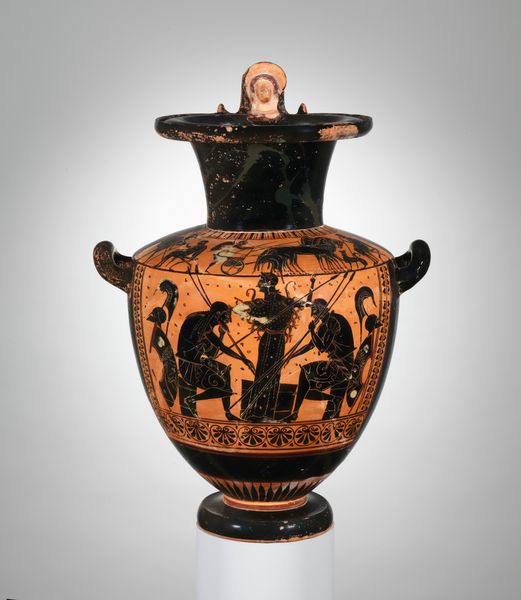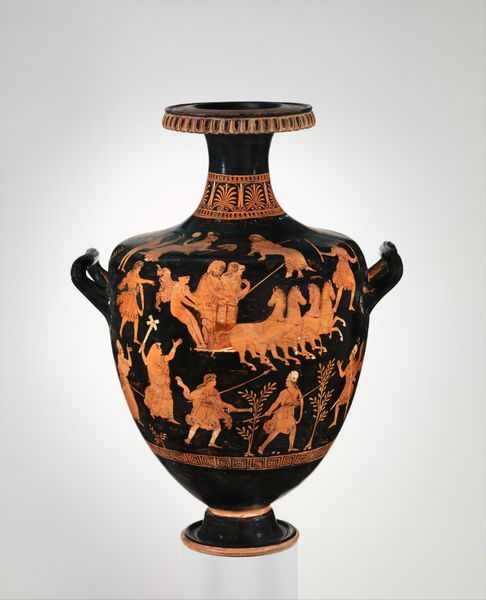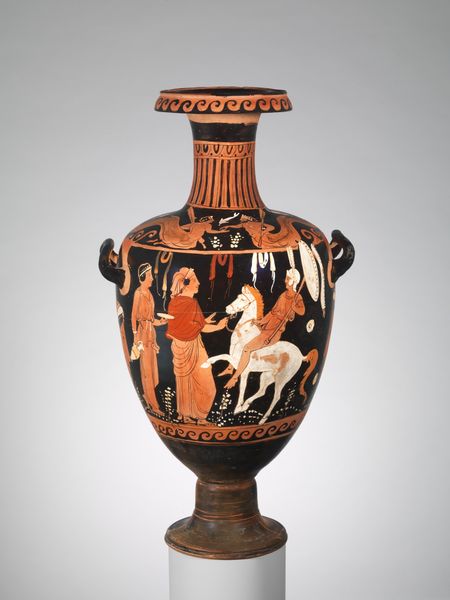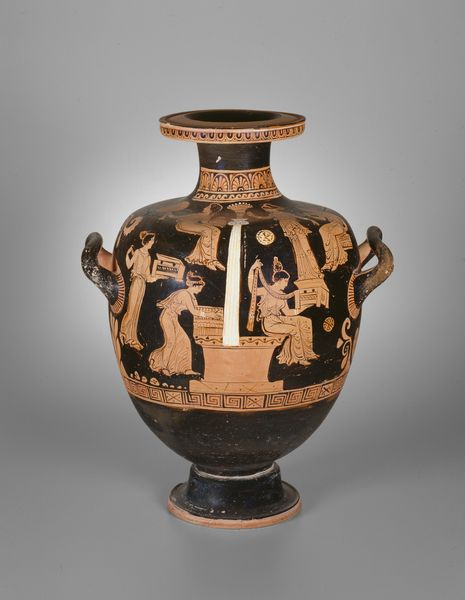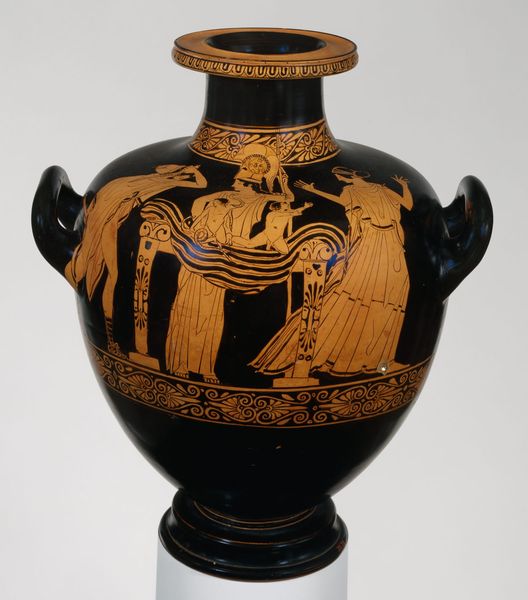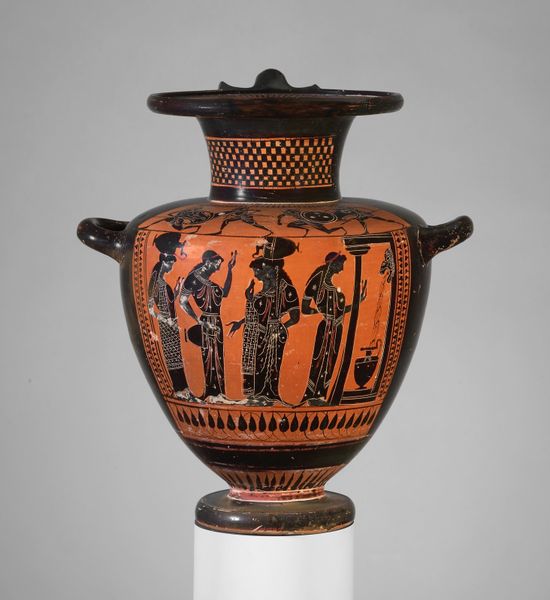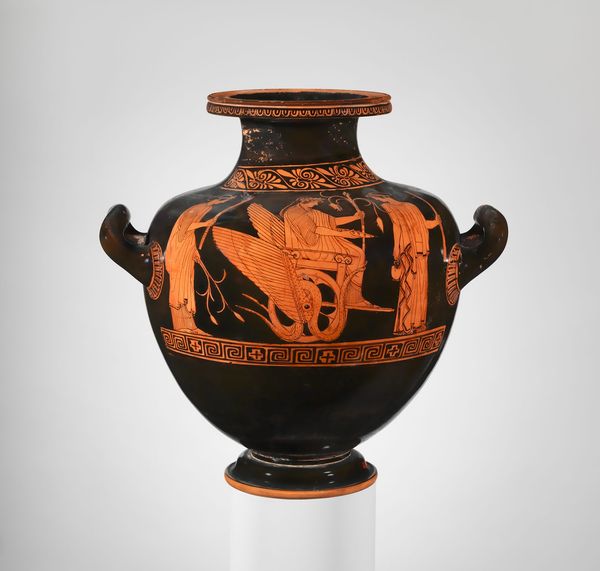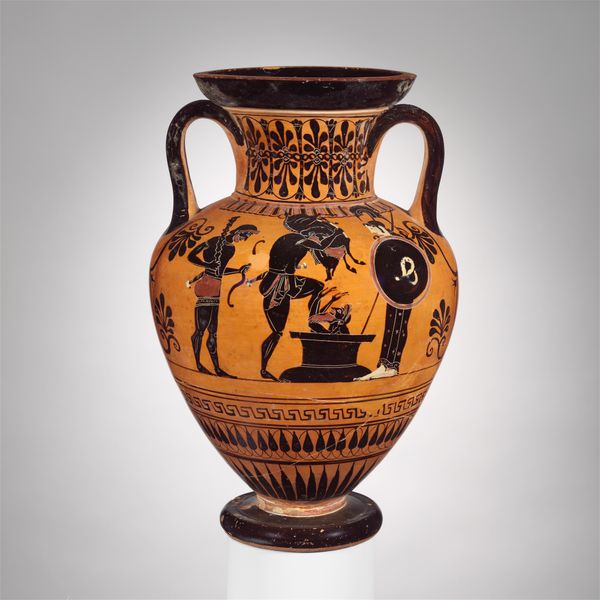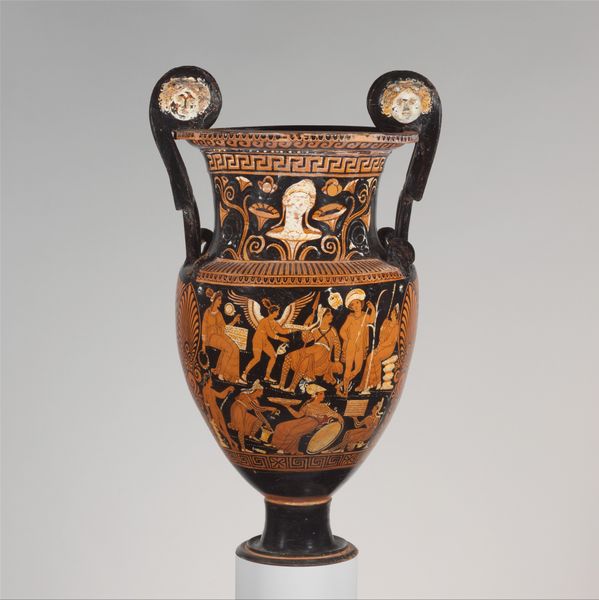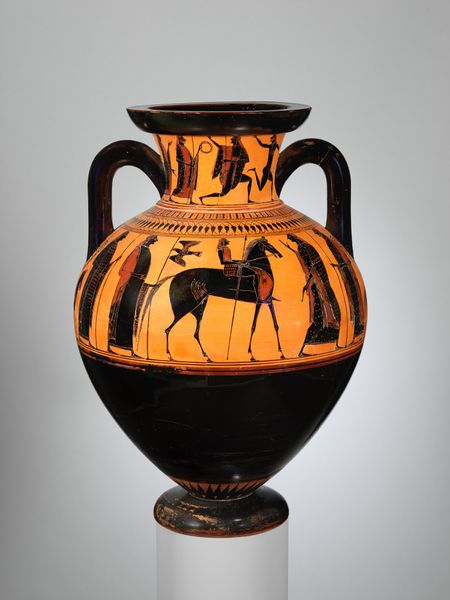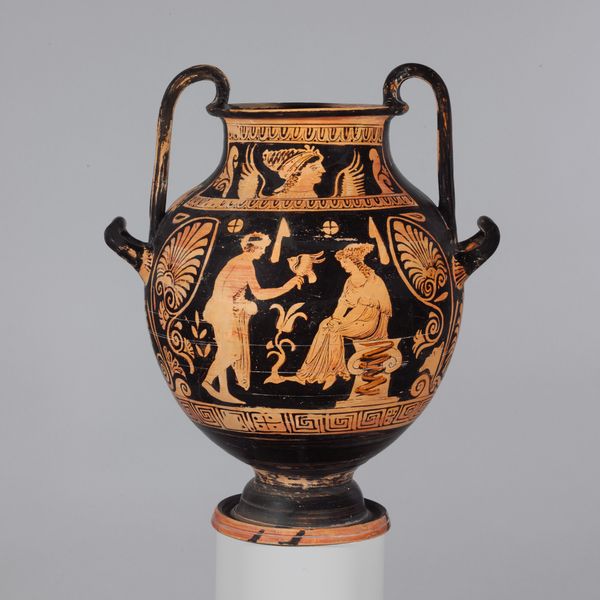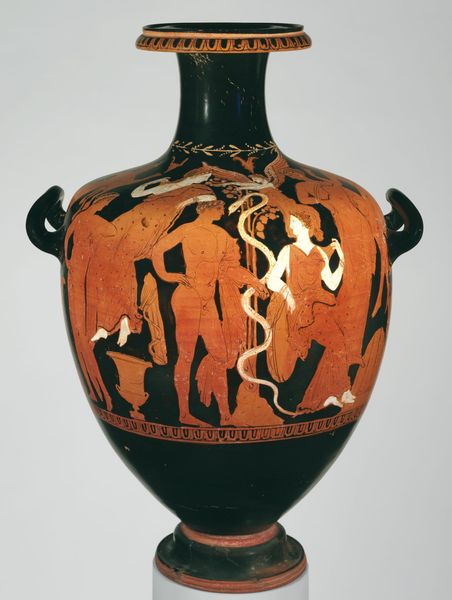
Terracotta neck-amphora (jar) with lid and knob (27.16) 540 BC
0:00
0:00
drawing, ceramic
#
drawing
#
greek-and-roman-art
#
ceramic
#
figuration
#
ancient-mediterranean
#
horse
#
ceramic
#
history-painting
Dimensions: H. 18 1/2 in. (47 cm) diameter 9 3/4 in. (24.8 cm)
Copyright: Public Domain
Curator: Here we have a terracotta neck-amphora with lid, crafted around 540 BC and attributed to Exekias. It is a striking piece of ancient pottery currently housed at the Metropolitan Museum. What are your first impressions? Editor: Well, it certainly grabs your attention. There’s a gravity to it, a grounded feeling, mostly due to its material—the earthiness of the terracotta. And the smooth, almost industrial precision of the black figures against that reddish clay really shows the maker's technical expertise. Curator: Absolutely. The black-figure technique, perfected by artists like Exekias, was the height of Athenian pottery. Let's think about this choice to depict specific scenes and narratives. What stories are being told through the careful placement of figures, animals, and objects? How do they construct a specific version of that world, particularly around power and gender? Editor: For me, it’s the crafting process that truly illuminates power dynamics. Who had access to the kilns? Who controlled the clay? The decoration, exquisite as it is, represents only one step in a longer, possibly exploitative, chain of production and consumption. Consider how each firing might subtly alter the clay's tone, reflecting not just design but the actual working conditions. Curator: And yet, the decoration is vital, too. Notice how the details on the figures create meaning – their garments, gestures, the direction they face – this can be seen as symbolic language through which societal values are transmitted and potentially challenged, within its own historical context. Think of how women are often presented in contrast to men. Editor: But these images weren’t born in a vacuum. The preparation of the clay, the turning on the wheel, the consistent heat of the kiln—these all leave traces in the final piece, hints about the workshop culture of ancient Greece and how art functioned within a system of labor and exchange. Curator: Agreed, it's a complex web. Seeing the pot reminds us that history isn't a single story but a multiplicity of perspectives intertwined in the clay. Editor: Exactly, the dialogue between material and social meaning offers a deep look into the past and its echoes. A reminder to engage all our senses to truly see it.
Comments
No comments
Be the first to comment and join the conversation on the ultimate creative platform.
